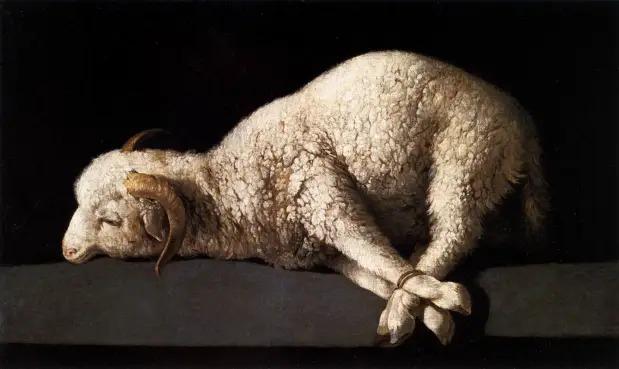The Word became flesh
and took up residence among us.
John 1:14a (HCSB)
The Christian life is an imprecise imitation of the unique Incarnation of Christ Jesus. The primacy of the Incarnation has been professed for two thousand years. Our definition of love must be shaped by the Incarnation: “In this is love, not that we have loved God but that he loved us and sent his Son to be the propitiation for our sins.” (1 John 4:10)
Within the lifetime of the Apostles, even as they were laying the foundation of the church (Ephesians 2:20), there were false prophets (1 John 4:1), wolves not sparing the sheep (Acts 20:29), waterless clouds (Jude 12) and those seeking to stir up division (Titus 3:10). The early church spoke of the ‘deposit of faith’, i.e., the orthodox statement of the gospel. How have Christians contended for this deposit? The answer is found in the first four councils of late antiquity.
The First Four Ecumenical Councils
The Age of Constantine introduced a trajectory for subsequent emperors to order synods and councils to defend or articulate challenging theological disputes. The primary focus was the Person of our Lord Jesus Christ.
The Council of Nicea responded to the teachings of Arius. He taught that Jesus was merely an exalted human being, the first of all creation (Colossians 1:15), explaining “before He was begotten he was not.” As Jesus alone can save us (Acts 4:11-12) it is of necessity that Jesus is divine (John 8:58). As it was a matter of salvation, the council affirmed the full deity of our Lord.
“…that is from the substance of the Father, God from God, light from light, true God from true God, begotten not, Consubstantial [homoousion] with the Father…”
Council of Nicea, 325
By the time of the Council of Constantinople another Christological error had emerged. Apollinarius supposed that in Jesus we see “God in a man”. It was as if the body of Jesus was an empty vessel and He was filled with the divine nature of the Son of God, devoid of a human mind and spirit. This Jesus was unable to sympathize with us (Hebrews 4:15).The key assumption being “for that which He has not assumed He has not healed.”
“…for us humans and for our salvation he came down from the heavens and became incarnate from the holy Spirit and the virgin Mary, became human and was crucified on our behalf…”
Nicene-Constantinopolitan Creed, 381
The Council of Ephesus dealt with the mysterious union of the humanity and deity in the One Person of Jesus. The patriarch of Constantinople, Nestorius, taught that there were two separate persons within Christ, one human and one divine. This sharp separation of persons was deemed heretical as Scripture does not distinguish between the operations of the divine and human natures, rather it affirms the One Person of Christ (Luke 9:35).
“…for us and for our salvation, born of Mary the virgin, according to his humanity, one and the same consubstantial with the Father in godhead and consubstantial with us in humanity, for a union of two natures took place. Therefore we confess one Christ, one Son, one Lord…”
Council of Ephesus, 431
The Council of Chalcedon is the triumph of Christian orthodoxy, the zenith high Christology. In a case of overcorrecting against Nestorianism, a novel teaching was sprouting in Constantinople. A leading monk, Eutyches, claimed that the two natures of Jesus Christ were mixed together into one new nature. He taught that as these two natures converged at the Incarnation the divine nature overwhelmed the human nature and “like a drop of wine into the ocean, so the humanity of Christ was swallowed up and lost, and that the divinity of Christ took over entirely.” Consider this noble response:
“We, then, following the holy Fathers, (Hebrews 13:7) all with one consent, teach men to confess one and the same Son, our Lord Jesus Christ (Acts 1:14, Ephesians 4:4-6), the same perfect in Godhead (Titus 2:13, John 1:18, Hebrews 1:8, John 18:6, 10:30, Matthew 16:16, Acts 8:37) and also perfect in manhood; truly God and truly man (John 1:14, 3:13), of a reasonable [rational] soul and body (Colossians 2:9); consubstantial [coessential] with the Father according to the Godhead (Hebrews 1:3), and consubstantial with us according to the Manhood; in all things like unto us, without sin (Hebrews 4:15); begotten before all ages of the Father according to the Godhead (John 17:5), and in these latter days, for us and for our salvation, born of the Virgin Mary, the Mother of God (Luke 1:34-35, Matthew 1:18, Galatians 4:4), according to the Manhood; one and the same Christ, Son, Lord, Only-begotten, to be acknowledged in two natures, inconfusedly, unchangeably, indivisibly, inseparably; the distinction of natures being by no means taken away by the union, but rather the property of each nature being preserved, and concurring in one Person and one Subsistence, not parted or divided into two persons, but one and the same Son, and only begotten, God the Word, the Lord Jesus Christ (John 1:1, Hebrews 13:8), as the prophets from the beginning [have declared] concerning him, and the Lord Jesus Christ himself has taught us (Hebrews 1:1), and the Creed of the holy Fathers has handed down to us.” (2 Timothy 1:13, 2 Timothy 3:14-15)
Chalcedonian Creed, 451
“What sort of man is this, that even winds and seas obey him?”
In Matthew 8:23-27, we find Jesus asleep in a boat while a storm is raging. He then rose and rebuked the winds and the sea resulting in a great calm. “Here we see Jesus’ weak human nature completely hid His omnipotence until that omnipotence broke forth in a sovereign word from the Lord of heaven and earth.”
Four truths had been affirmed: 1. Jesus is fully divine, against Arianism; 2. Jesus is fully Human, against Apollinarianism; 3. Jesus is One Person, against Nestorianism; and 4. Jesus has Two Natures, against Eutychianism. This is known as the Chalcedonian box. The contents of the box are filled with the four Gospels: Matthew, Mark, Luke and John. This was not an attempt to explain away the mystery of the Incarnation, rather it held on to the truths of Scripture and rested in the complexity. Mid-way through the Creed we find the heart of the confession with four negative statements:
• Inseparably – Cannot be separated into two persons. This is a real and substantive union. Not merely a moral or relational partnership.
Imperatives from the Incarnation
The Incarnation of Jesus is distinct from our experience. This means that we are unable to fully comprehend His Person. He alone tastes eternity and embraces flesh; uncontained yet contained; invisible yet now forever visible; omnipotence yet suffering; knowing all things yet in His humiliation limited in knowledge; being everywhere yet localized. That said, the Incarnation is the framework of our sanctification.
Jesus did not covet His eternal wealth; He laid it aside in order to redeem His bride (Hosea). He parted with unfathomable riches for our sake. O sinner, run to Him today as long as it is still today. Make no provision for the flesh. Enter by that narrowest of Gates. Give yourself entirely to the King of kings. Spend yourself for His name’s sake.
This unique rendering ’likeness of sinful flesh’ emphasizes the context in which the incarnation occurred, i.e., among sinners for sin. Our need of Jesus is exclaimed in this phrase. So, consider your record of sin, could you even begin to list it? In Jesus you have one who took on all that it meant to be human yet resisted sin at every turn, even unto death. Pray that your ‘likeness’ be incrementally changed to match His with the grace that comes from above. Put away every weight of sin that might keep you from beholding His face, beloved.
We have received an eternal adoption through our divine Sibling. This One has brought the saints into fellowship so that we may become one in Him. He was sent on a mission, a mission that He accomplished resulting in an eternal inheritance. His account for ours: One perfect Substitute. Treasure the beloved saints.
Our High Priest Jesus the Christ, is able to fully sympathise with us. On our behalf before the Father and on the Father’s behalf for us. At this very moment He is seated at the right hand of the Majesty on high. He rules and reign forevermore. In that case, more than the Christian life being an imprecise imitation of the incarnation, He is able to intercede perfectly for us. There will be a Day when the fully divine and fully human Jesus will judge all of humanity. The one who conquers will be clothed thus in white garments, and Jesus will never blot his name out of the book of life. Jesus will confess his name before His Father and before His angels. But, to the one who fails to repent: a grave and fearful expectation.
Our great God and Saviour Jesus Christ truly is the Way, the Truth and the Life. Contend for the Deposit.
2



One of the most controversial doctrine; the Divinity and Humanity of Jesus Christ. The doctrine of the Hypostatic union has been strongly defended, preserved by the Holy Scriptures and the weapon of the faithful saints against the heretic and false teachers.. Thank you my brother Michael Smit for the truthful and insightful article!
God bless you.